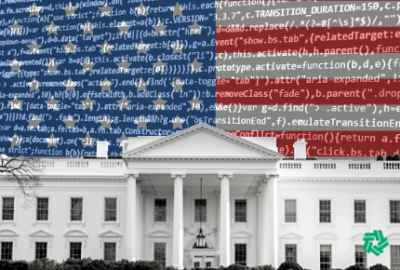Hubbard Radio Washington DC, LLC. All rights reserved. This website is not intended for users located within the European Economic Area.
Governmentwide chat, calendar collaboration tools coming in 2022
HERSHEY, Pa. — Sometime in early 2022, federal employees will be able to check the calendar and chat with a colleague at another agency. No more emailing and hoping they will respond. No more playing calendar tag to try to find an agreeable time for a meeting.
The CIO Council tested out this new collaboration capability during a nine-month pilot with four agencies, and now is ready to roll it out across the government.
Maria...
HERSHEY, Pa. — Sometime in early 2022, federal employees will be able to check the calendar and chat with a colleague at another agency. No more emailing and hoping they will respond. No more playing calendar tag to try to find an agreeable time for a meeting.
The CIO Council tested out this new collaboration capability during a nine-month pilot with four agencies, and now is ready to roll it out across the government.

Maria Roat, the deputy federal chief information officer, spearheaded this pilot with a goal of not only proving it can be done, but creating a long sought-after capability.
CIOs at the National Science Foundation, the Small Business Administration, NASA and the Education Department led the pilot to implement the ability to share calendars and have real-time chat tools.
“We know there’s a market out there already across the federal government, regardless of who you are to have this capability turned on. Once we start turning it up, there’s going to be a training component for how to reach you at your agency,” Roat said in an interview after her panel at the Imagine Nation ELC 2021 event sponsored by ACT-IAC. “But outside of that, it’s actually quite simple.”
Roat said it’s not that sending emails or picking up the phone to call someone is that difficult, but knowing the person’s phone number or waiting for them to respond to an email may not make sense if you need a quick answer.
“I can’t tell you how much time assistants spend with emails going back and forth, who’s available and when, and being able to at least see ‘free/busy’ on a calendar will make life a whole lot easier,” she said. “It’s changing how we operate rather than the ways we always communicated.”
The CIO Council now is creating a program management office in the General Services Administration’s Office of Governmentwide Policy to help manage the policy and process changes.
“I think it’s really important for us to remember that the requirements space for the federal government is going to be cross collaborative going forward, and that our partners in industry need to understand that that’s our requirements space,” said Dan Pomeroy, GSA’s deputy assistant administrator in the Office of Information Integrity and Access in OGP. “Fragmenting our activities is less efficient, and we’re going to make purchases based on what our requirements are, and COVID made that very, very clear. We’re excited about what the future can bring with what we have, what [are] the technical solutions that we have in hand today. And that should be an important bellwether for what direction we’re heading in the future.”
Roat said the council will continue to turn on these capabilities for any agency that wants them, and they will be available to all employees, not just those in the CIO’s office starting by February.
“That’s going to take a couple of months, but we had the first call last week. We’ve got a follow up this week, another one next week. They’re able to ask questions once and everybody hears it, and they can talk about what we’re doing,” she said. “Eventually, it’s going to be moving into being able to share documents and being able to just broadly collaborate no matter what the tool is or whatever the capability is.”
The council is starting with Microsoft Teams, but Roat said there is another pilot integrating Microsoft and Google tools. She said the goal is to be tool agnostic.
Roat said when she first broached this topic more than a year ago, she heard a lot of excuses like there were records management or cybersecurity rules that prohibited this type of collaboration. Through the pilot, the agencies knocked down each of the perceived obstacles.
“Let’s go talk to NARA, and it turns out NARA has a policy around collaboration capabilities, and it just needed to be updated. They are working on that right now,” she said. “So check that box, done. With cybersecurity, we’ve got to have a MOU with every agency. We got through that. And guess what? Agencies don’t need a one-to-many. You can have one that covers you for the whole federal government. So check that block, we got that out of the way. So really thinking through what we wanted to do at getting some of those barriers out of the way we completed the pilot in July.”
Roat said this pilot wasn’t an outgrowth out of the idea of CEOS — short for Civilian Enterprise Office Solutions — idea that percolated in 2019 and modeled after the Defense version known as DEOS. She said it was more that the CIO Council saw a need and wanted to fill it.
“DoD last year during the pandemic turned up these similar capabilities in the cloud. As DoD rolled into that hybrid work, and the federal civilian agencies has just not turned up the capability across the civilian government,” she said. “Since I’ve come into the role, I’ve seen a need for it. I see the people want this, they’re asking for it at the staff level across the so we’re just doing it turning it up.”
Jason Miller
Jason Miller is executive editor of Federal News Network and directs news coverage on the people, policy and programs of the federal government.
Follow @jmillerWFED
Related Stories
Exclusive
Reporter's Notebook
Read more






